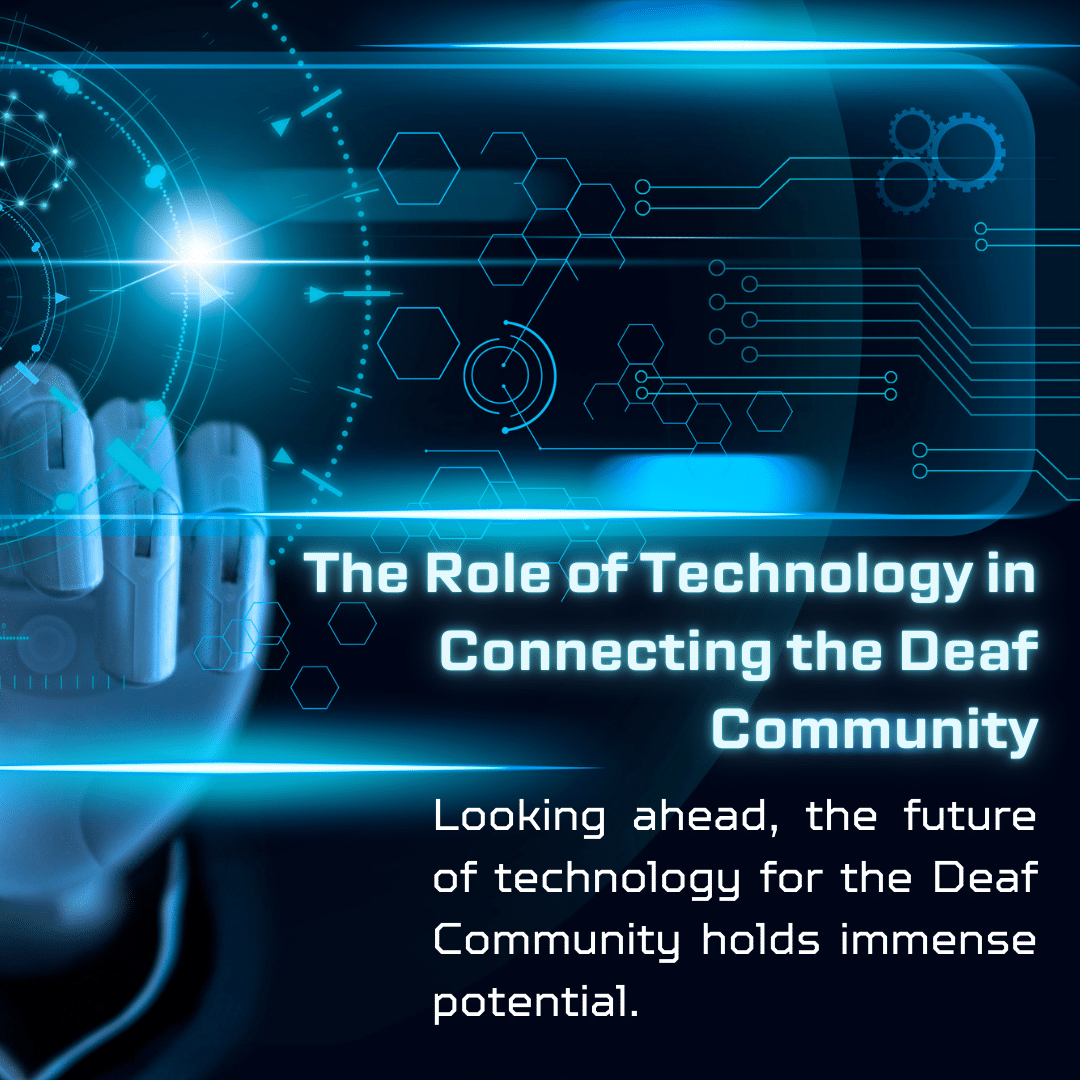
The Deaf Community and How You Can Get Involved
- by Michelle Jay
- 6 Comments
When you are learning American Sign Language, it is important to get involved with the Deaf community. Many believe that learning ASL within the Deaf community is the only true way to become fluent in the language.
But first, it is important to understand that the Deaf community is just one part of the Deaf Experience. The Deaf Experience also includes Deaf Culture, which is very important to learn about even before getting involved in the Deaf community. After learning about Deaf Culture, you will be familiar with the customs and rules of behavior before you start to get involved with the community. So, be sure to read our Deaf Culture article as well before getting involved.
The Deaf Experience
When you begin socializing with Deaf people and honing your ASL skills in this way, we want to make sure you know what part of the group you are in. There are four “levels” of being involved with the Deaf (the Deaf Experience): deaf people in isolation, the Deaf community, Deaf culture, and the Deaf Ethnicity. They are all completely different.
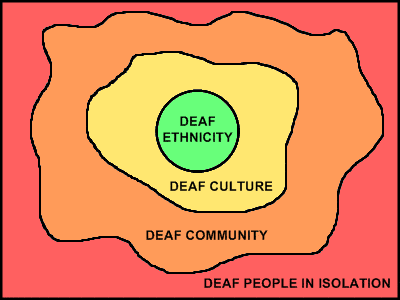
Deaf People in Isolation
Deaf people who are part of the hearing world are on this level. They are the furthest from being involved. They are deaf, but they are not Deaf (you can learn more about this distinction in our Deaf Culture article). These individuals are often products of oral schools and are trying to fit into the hearing society.
Deaf Community
The term “community” has been debated about. Carol Padden puts it best: a community is a social group that lives in a certain geographical area, shares common goals, and carries out certain responsibilities to each other. Immersion in the Deaf Community is different from immersion in Deaf Culture.
Location
A Deaf community is relative to its location. There are many Deaf communities in the US, but only one Deaf Culture.
Language
The Deaf community is more flexible with its language use than Deaf Culture. When Deaf people converse in a situation involving hearing people, they may use a variety of Signed English to help support understanding. However, the strict language in Deaf Culture is American Sign Language (ASL).
Goals
Deaf people have faced restrictions and oppression while being the minority group in a hearing world. However, when they band together to further the goals of the deaf, they define their culture.
Members of the Deaf community share common goals. One of the main goals of the Deaf community is to achieve recognition of deaf people as equals. They also want their history to be recognized and ASL to be accepted as the official language of the deaf.
As discussed in the Deaf History section, the acknowledgement in the late 1960s of sign language being appropriate for deaf education was a huge success for members of the deaf community. This renewed support for sign language meant deaf students and their teachers would be able to use their native language in the classroom.
Members of the Deaf community include deaf and hearing people (including hearing family members, interpreters, ASL teachers, etc.) that share in the culture and use ASL. These people do not have to be deaf themselves and can be part of other cultural groups, but they support the goals of the Deaf and help to achieve them.
Membership in the Deaf community is not as strict as membership in Deaf Culture or the Deaf Ethnicity. That is why the line around the Deaf community is more fluid in the diagram–the membership varies. Your ASL immersion will most likely occur with people who are a part of this level.
Deaf Culture
The culture of the Deaf is much more restrictive. On this level, you would more closely identify yourself with Deaf Culture before any other culture. Normally, you need to have a degree of hearing loss to be a part of this culture. However, some hearing children of Deaf adults (CODAs) are on this level because they have been brought up learning ASL and the cultural values natively.
People who are part of this level generally include: deaf and hard of hearing individuals who identify with Deaf cultural values and behaviors, and know and use ASL (not the thought-up language systems like Signed English). These can include deaf or hard of hearing people who first started in an oral school in the hearing society then came to know and be involved in Deaf culture. Hearing children of Deaf adults can also sometimes be involved in Deaf culture because they were raised in it. Rarely, hearing people without Deaf parents who learn ASL and become involved in the community are part of Deaf Culture.
The line around Deaf Culture in the diagram in less fluid than the one for the Deaf Community (which means it is more restrictive), but it is more fluid than the one for Deaf Ethnicity. Be sure to read our Deaf Culture article for the essential information you need to know.
Deaf Ethnicity
The Deaf Ethnicity is the most restrictive group and is rarely discussed. ASL immersion can take place with people who are at this level, but you will most likely never be a part of it. This level is reserved for those who are Deaf and were raised with ASL in Deaf culture. This usually involves a Deaf child of Deaf parents. This situation is surprisingly rare, but highly valued.
The Deaf Community
We will now focus on the part of the Deaf Experience in which you are most likely to be involved as an ASL learner–the Deaf community.
Not all deaf people use American Sign Language to communicate. However, those deaf people who do use ASL share a language bond that unites them as part of the Deaf community.
The members of this community not only share a common language, they are also linked by similar beliefs and attitudes about themselves and about the world. Some deaf people do not view themselves as disabled. They describe themselves as part of a different heritage and culture–Deaf Culture. This strong sense of Deaf identity is nurtured by the community and passed on through generations.
ASL is the main bond that members of this community have. If you do not use ASL, you are not part of the Deaf community. Hearing people who use ASL can take part in the cultural and social life of this community. For example, hearing children with deaf parents (CODAs) acquire ASL naturally during childhood. They are a part of this community and some people even think they are a part of Deaf culture.
True proficiency in ASL is not just about having an extensive vocabulary. It’s about signing in the context of Deaf Culture. Find Deaf events in your area and converse with people who use ASL in their day-to-day lives–Deaf people. Then, and usually only then, will you truly learn to be a proficient signer.
Becoming a Member of the Deaf Community
Becoming a member of this community means more than just learning American Sign Language. You need to be willing to enter the Deaf experience. The diagram below is my illustration of the diagram developed by Charlotte Baker and Dennis Cokely in 1980 to explain how a person qualifies for becoming a member of the community of the Deaf:
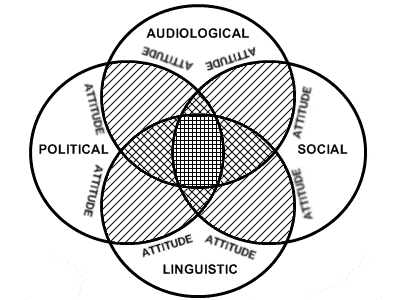
The center of the diagram represents Deaf Culture. To be accepted and fully participate in Deaf Culture, you MUST possess all four characteristics that define the culture: social, audiological, linguistic, and political.
The Deaf community is illustrated by the other shaded portions of the diagram. You must have at least TWO of the characteristics to participate in the community of the Deaf.
Let’s take a look at each one:
Social
You need to join in the social life of the community of the Deaf for this characteristic. This means having attended a Deaf residential school, or having Deaf family members, spouses, or friends. A hearing person who uses American Sign Language, regularly attends Deaf community events, and advocates Deaf issues (a sign language interpreter, for example) will come as close to the center of Deaf culture as a person can who does not have a hearing loss. To learn more about the important social lives of Deaf people, read my Deaf Culture article.
Audiological
You MUST have a hearing loss to get credit for this characteristic. It doesn’t matter if you are deaf or hard-of-hearing, to a Deaf person, hearing loss means deafness. Deaf is a term used in the community of the Deaf to mean a life experience instead of a hearing loss. To learn more about the different terms for deaf, read this section of our Deaf Culture article to learn about the special distinction between Deaf, deaf, hard of hearing, and hearing-impaired.
Linguistic
You must use and advocate American Sign Language. You not only need to memorize vocabulary, but also learn how to ask questions, make sentences, carry on a conversation, and provide information. You need to learn and respect the signing customs and etiquette of Deaf culture and use them to properly sign in ASL.
Political
You need to be a passionate advocate of Deaf issues and ASL. Political members of this community are usually Deaf people who hold positions in Deaf organizations like the National Association of the Deaf.
Attitude
All of the characteristics of the Deaf community are linked by attitude. You need to love the Deaf experience. If you have the proper respect, the willingness to learn about Deaf issues and deafness, and are enthusiastically involved, you will be accepted by the Deaf community whether you are deaf or hearing.
Deaf Identity in the Deaf Community
by Jill Baylor | January 29, 2020
For this research paper, I decided to interview a hard of hearing person who has a Deaf identity. I also used different sources of literature to read about Deaf identity. There are several ways in which a deaf person creates a Deaf identity. Certain factors lead a deaf person to join the Deaf culture and become part of the Deaf community. The person I interviewed, Gerry Bateman, although hard of hearing, has created his very own Deaf identity.
According to the article “Deafness and the Riddle of Identity,” deaf identity is linked to those who share a common language, American Sign Language (ASL), and a common culture, Deaf culture. There was a major problem brought up in this article with defining deaf people as a linguistic group; it neglects non-native users of ASL. This also would mean that children of deaf adults (CODAs) would be considered deaf, since they are native signers, even though they themselves are hearing. This article proposes that there are flaws within what some people may consider the “actual deaf identity.” The truth is that many consider themselves part of the Deaf culture and community, even if they are not deaf, native signers, or were not born to deaf parents. There are actually only about 5% of deaf individuals that were born to deaf parents. The others fall under the category of being hard of hearing, non-native signers, using a code such as pidgin signed English, or oral deaf, but these individuals can still be part of Deaf culture and be in-tune with the Deaf community. The person I interviewed for this assignment, Gerry Bateman, considers himself as part of Deaf culture and the Deaf community. Although he is hard of hearing and can speak, he still participates in Deaf events with friends and other Deaf community members, has become fluent in ASL, and embraces Deaf culture. These are all important factors that contribute to his deaf identity (Davis).
Another major factor that has lead Gerry Bateman towards adopting a deaf identity would be the two different perspectives of deafness. According to Ge Chen and his work “Influential Factors of Deaf Identity Development,” there is a physiological perspective and a socio-cultural perspective of deafness. The physiological perspective views deaf people as having a disability, are abnormal, they need to be mainstreamed within a hearing society, and the need to learn how to speak and hear. The socio-cultural view of deafness sees deaf people as a unique culture, an ethnic minority, and having a rich language (Chen 2-12). Gerry, being a hard of hearing individual that shares this culture and language with other deaf/hard of hearing individuals, falls under the socio-cultural perspective of deafness.
Family, education, mode of communication, and status of hearing loss are also major factors that influence one’s deaf identity. Family is a factor because the parents’ view of their deaf/hard of hearing child plays a role in how that child is raised. In Gerry’s case, his mother had asked the doctor about his hearing, but it was Gerry’s decision to start learning ASL when he began his college career. Had Gerry’s parents introduced him to ASL or other deaf individuals sooner, he may have become part of the Deaf culture when he was a young boy. No one else in Gerry’s family has ever learned ASL, he was the only one. Education plays a key role because depending on the educational setting, the deaf or hard of hearing child will learn differently. In a mainstreamed setting, the child falls more under the physiological perspective, but in a deaf/hard of hearing program or school, the child falls under the socio-cultural perspective. Gerry’s college allowed him to learn and use ASL freely, classmates were accepting of the language and used it themselves, and teachers also embraced the language and used it in their instruction. This has shown a huge impact on his deaf identity today because it sculpted his career in working with deaf/hard of hearing individuals in the educational setting. The mode of communication plays a role in creating a deaf identity for Gerry because he is bilingual, which means he uses English and ASL every day. He will speak to hearing individuals that are not familiar with ASL, but when communicating with a deaf or hard of hearing individual, he prefers to use ASL. He suggests that all parents of deaf or hard of hearing children introduce them to ASL and embrace the Deaf culture. The status of hearing loss is a factor in creating Gerry’s deaf identity because since he is hard of hearing, he was never pre-lingually deaf, which means becoming deaf before the onset of language development. This article suggests that those who are pre-lingually deaf are more “culturally deaf,” but in Gerry’s case, he has adapted himself into the Deaf culture by the other factors mentioned above more so than his status of hearing loss. The main point is that one does not have to be born deaf, pre-lingually deaf, or deaf at all in order to create a deaf identity (Chen 2-12).
The article “Development of Deaf Identity: An Ethnographic Study,” by McIlroy and Storbeck, suggest that there may actually be a “bicultural deaf identity,” which suggests that an individual transitions between both the Deaf and hearing communities (McIlroy & Storbeck 494-511). This could also play a role in the shaping of Gerry’s deaf identity. Although he participates in deaf events on a regular basis, he is still in-tune with the hearing community as well. He can speak to hearing individuals and go to hearing events, as well as participate in deaf events while using sign language with deaf individuals. He transitions between both communities, which could mean that he has a bicultural deaf identity.
The last major factor that supports Gerry’s creation of his deaf identity would be that one’s identity is variable. Identity of an individual can change over time under certain circumstances. For Gerry, he was not exposed to Deaf culture when he was young and found out that he was hard of hearing. Instead, he had adapted towards the Deaf culture on his own after beginning his college career in a program for Deaf education. According to Johnson, in her article “The Multiplicity of D/Deaf Identity,” she states that “we may assume that a person who is labeled hard-of-hearing to be forever on the margin, unable to assimilate into a hearing or Deaf group. The problem with this assumption is that the “hard-of-hearing label is not that clear-cut due to the presence of different ways of being hard-of-hearing.” It is evident that Gerry falls under this category in that he is considered to be on the margin of being labeled deaf or hearing, but with all of the factors connecting him back to the Deaf culture throughout his life, he would still consider himself as having a deaf identity (Johnson).
There are several factors that lead an individual to having a deaf identity. A deaf identity is not necessarily created when a deaf individual is born, but instead it can be created at any time throughout one’s life. Even hearing people can have their own “deaf identity,” as long as they share similar experiences with other deaf/hard of hearing individuals, embrace the culture, and use American Sign Language. As a result of family experiences, language use, educational background, and other factors, Gerry Bateman has created a deaf identity over time.
References:
Chen, Ge. “Influential Factors of Deaf Identity Development.” Electronic Journal for Inclusive Education 3.2 (2014): 2-12. Print.
Davis, Lennard. “Deafness and the Riddle of Identity.” The Chronicle Review 53.19 (2007): B6. Print.
Johnson, Kristen. “The Multiplicity of D/Deaf Identity.” Disability Studies Quarerly 32.4 (2012). Print.
McIlroy, Guy, and Claudine Storbeck. “Development of Deaf Identity: An Ethnographic Study.” Journal of Deaf Studies and Deaf Education 16.4 (2011): 494-511. Print.
Next Steps
If you want to be involved in the Deaf Community, you first need to start learning American Sign Language. ASL is the core bond within the Deaf community and Deaf Culture and is the first step for hearing people to get involved. At Start ASL, we offer many Start ASL course options to suite your time and budget, so be sure to check them out.
Next, try to find Deaf Events in your area where you can meet Deaf people and practice your ASL skills. The most important thing to remember is Attitude – as long as you are humble, enthusiastic, and willing to learn, you can be accepted by the Deaf community, make friends, and become strongly fluent in ASL.



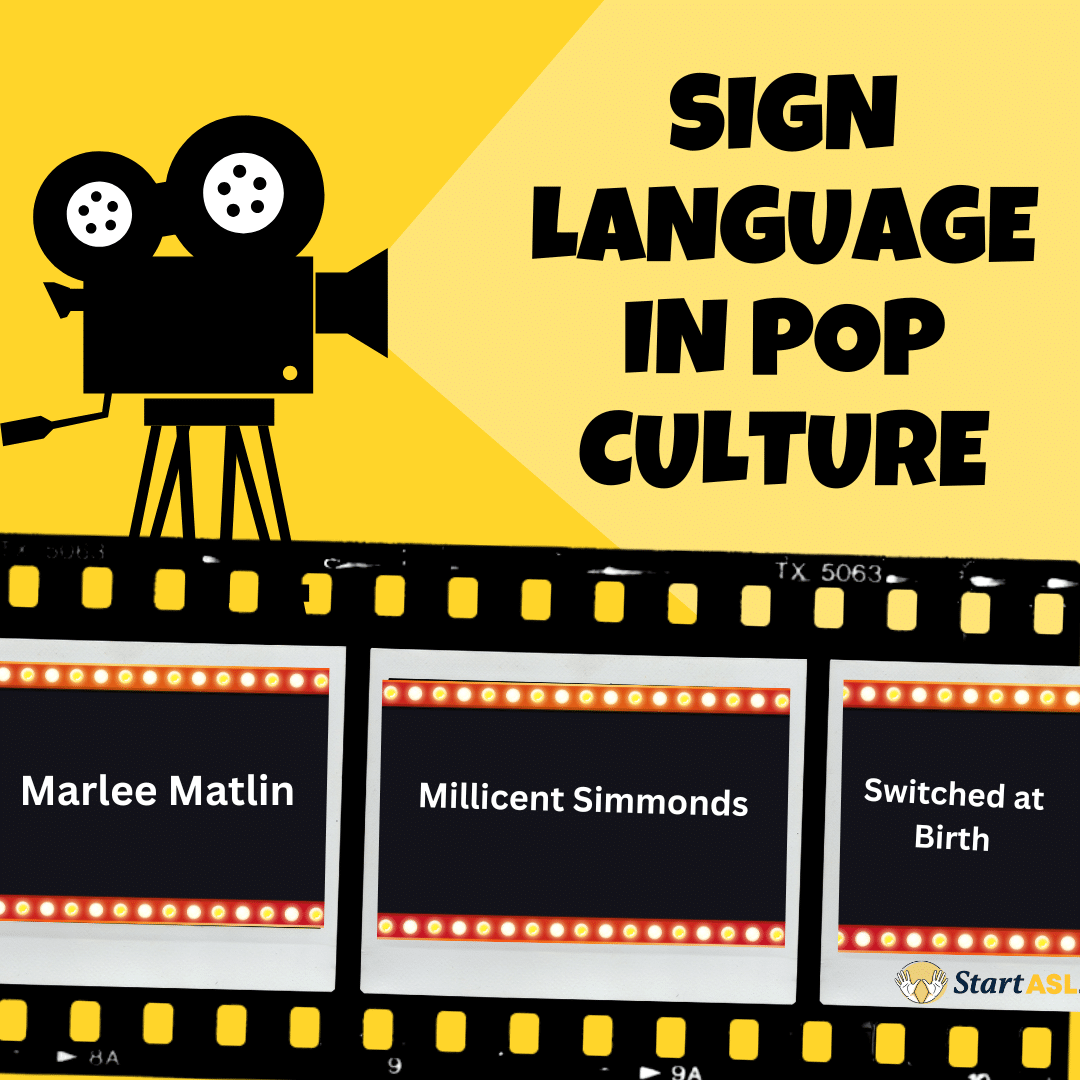
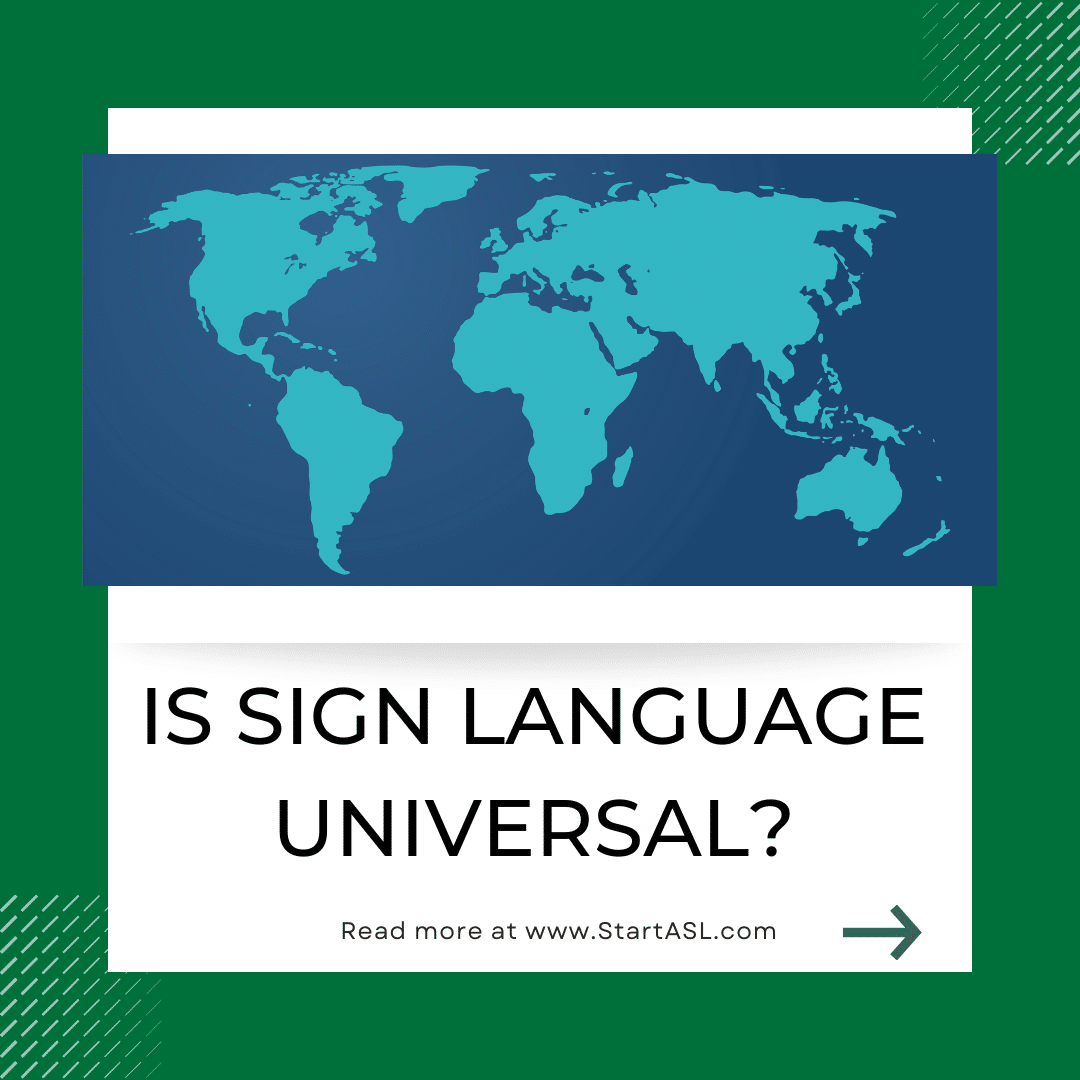

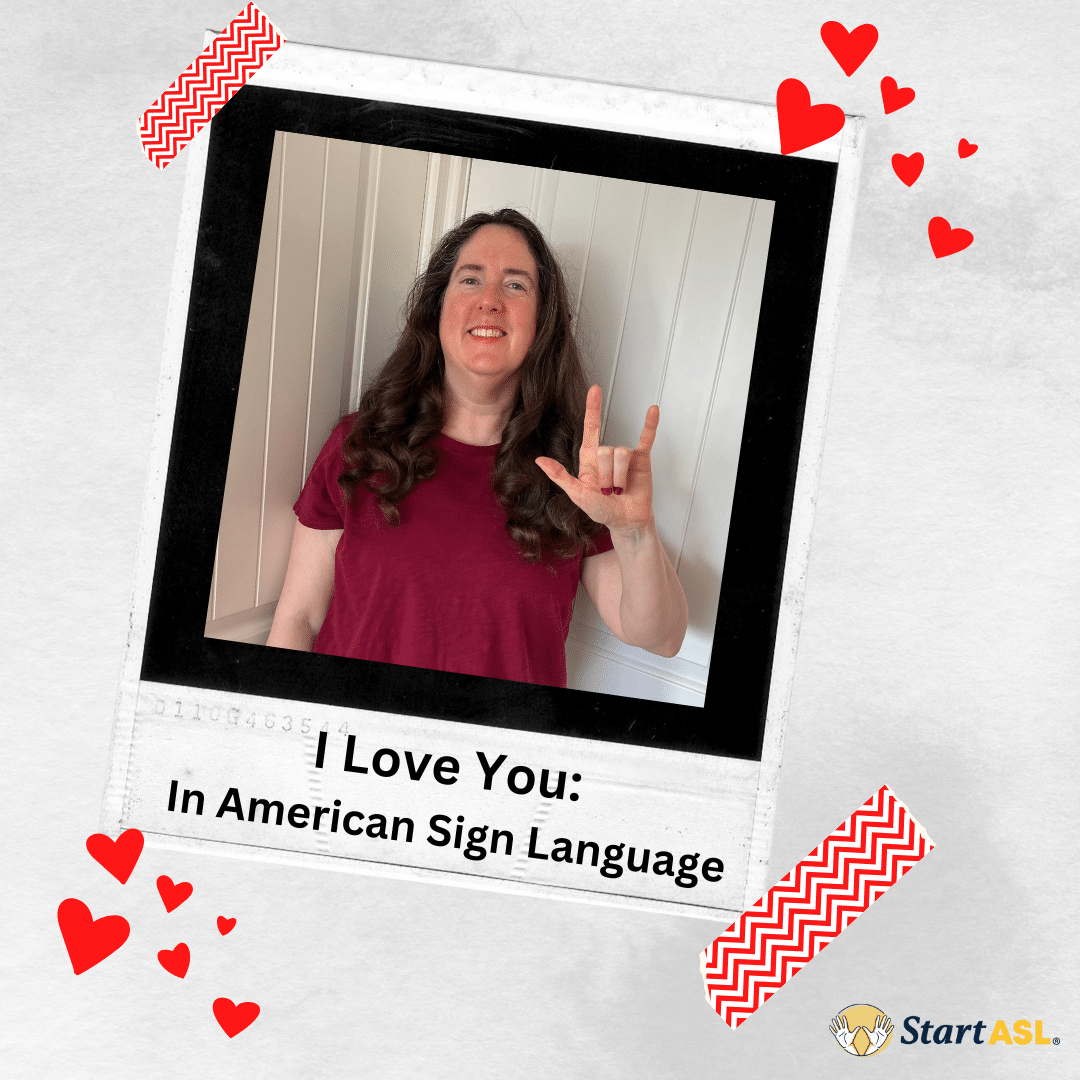




6 Responses
I am trying to get into the deaf community, I have deaf family members, I am not deaf but i am wanting to get into the jobs for interpreters. I want to be able to help with communications between the deaf and hearing world.
Great article! Very informative. I became half deaf when I was 27 so I am interested in learning ASL and meeting other deaf or hard of hearing people.
Hello,
I somehow got into learning ASL as a additional language. I am not deaf nor have I had many interactions with the deaf culture. I desperately have been trying to research my way into a little community that would give me a chance to learn with them. As you can see I added our website. Me and my partner are travel providers in southern Africa and I would like to get in touch with divers specifically since in diving, it is ALL sign (that is the most I had with sign in my life before). I would like to open up doors and be a contact for that matter and learn how to teach in sign. Please let me know where I can go.. Thanks you!
I really enjoyed this article and it gave me an inside look on the Deaf culture.
how do i become deaf advocate?? since i am deaf and have tremendous experience in many discrimination against me personally and seen onto others as well i would like to know more and expand more knowledge in this area as i am right in center of athens where a UGA college is, at what courses to take please let me know thank you.
Hi Candis, I recommend checking with your local college to see if they offer any programs or have any groups in this area.